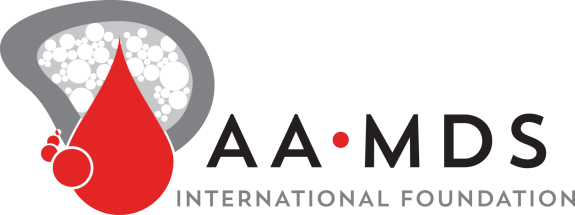Grants and Grant Recipients
Since 1989, AAMDSIF has provided research grants totaling in excess of $5.9 million to an international group of 107 researchers
The two-year grants have helped bring forth new insights into the causes and therapeutic approaches for these diseases. These grantee profiles present the grantees by year the awards were granted, and a summary of their grant-funded research projects.
Grant Year: 2021
Sushree Sahoo, PhD
Emily Kass Research Fund
Myelodysplastic syndrome (MDS) in children is a rare group of disorders in which blood-making stem cells in the bone marrow (BM) fail to work properly. As a result, patients develop low blood counts and have increased risk to develop leukemia with cancerous cells, referred to as blasts, also called refractory cytopenia of childhood (RCC). Although RCC is the most common category, we do not fully understand its molecular basis (gene and chromosome changes associated with the disease). Some patients with RCC have empty BM which might be mistaken for aplastic anemia, while others have acquired changes that predispose them to more advanced MDS and leukemia. Therefore, it is often difficult to tell apart RCC from other blood disorders such as inherited marrow failure or acquired aplastic...
Grant Year: 2020
Valentina Giudice, MD
Amy Gaynor Research Fund
Circulating low-density granulocytes (LDGs) are a subgroup of neutrophils with immunoregulatory functions which can spontaneously release extracellular web-like structures (NETs) and cytokines sustaining T cell responses and dendritic cell activation. We hypothesize that LDGs and NETs might be impaired in functions and frequency during myelodysplastic syndromes (MDS) and acquired aplastic anemia (AA) and might contribute to the suppression of hematopoietic stem cell proliferation and differentiation. We aim at investigating over a 12 month period the frequency and functions of LDGs and NET formation and composition in MDS and AA at diagnosis and during treatments. Moreover, the number of LDGs and NET levels will be correlate to other markers of inflammation and genomic alterations. This...
Audrey Lasry, PhD
Harold Spielberg Research Fund
Myelodysplastic syndrome (MDS) is a pre-cancerous disease of the blood, which progresses to the more aggressive acute myeloid leukemia (AML) in approximately 30% of cases. MDS currently affects about 60,000 people in the US, and about 10,000 new cases are diagnosed each year. Life expectancy for MDS patients ranges from 5 months to 3 years, yet therapeutic options for MDS patients are limited.
In recent years, advances in understanding of the immune system have led to a major breakthrough in cancer therapy, with the development of immunotherapy drugs that target the immune system rather than the cancer cells. These drugs are effective in many types of cancer, and have revolutionized treatment for cancers that were often considered untreatable in the past. The effectiveness of...
Grant Year: 2019
Jill de Jong, MD, PhD
Julia Malsin Research Fund
Aplastic anemia is a rare but serious blood disorder that occurs when the body’s bone marrow cannot produce enough healthy blood cells to function properly. Aplastic anemia can be classified as moderate, severe or very severe, depending on stability of blood cell count and other symptoms. Most cases of aplastic anemia are idiopathic, meaning the underlying cause is unknown. Aplastic anemia can be due to inherited (genetic) causes in a minority of cases. Although many patients with genetic causes of aplastic anemia will present with more moderate blood counts initially and may have a family history of blood disorders and other physical findings associated with these genetic disorders, some patients may not have any of these findings. It is not currently known how many patients who present...
Christin DeStefano, MD
The National Academy of Sciences Engineering and Medicine’s (NASEM) Veterans and Agent Orange (AO) Committees have been performing biennial reviews of the literature examining the relationship between AO exposure and the risk for adverse health outcomes since 1996. In 2018, the committee concluded there are sufficient data to associate AO exposure with an increased risk of Hodgkin and non-Hodgkin lymphoma, chronic lymphocytic leukemia, monoclonal gammopathy of unknown significance, and hypertension. In 22 years of follow up, there is only one paper addressing myelodysplastic syndrome (MDS) and none addressing aplastic anemia (AA) or myeloproliferative neoplasms (MPNs). The under representation is likely multifactorial, but low incidence is likely a major factor. This conundrum, lack of...
Grant Year: 2018
Eunice Sindhuvi Edison, PhD
Liviya Anderson Research Fund
Androgens have been used alone or in combination with other immunosuppressive therapy in aplastic anemia with inconsistent responses being reported. However, the exact mechanism of action of androgens is not known. Recent studies have shown that it tends to protect from telomere shortening in haematopoietic tissues by increasing telomerase activity. In addition, androgens exert various biological effects on both haematopoietic cells and stromal cells. Androgen receptors are found to be expressed on stromal cells, macrophages, endothelial cells, myeloblasts, myelocytes, neutrophils, and megakaryocytes.
Androgens also have a suppressive effect on the immune system. Shortened telomeres in aplastic anemia were initially attributed to stress factors but was later recognized that telomere...
Valeria Visconte, PhD
Patricia and Vincent Geczik Legacy Fund
Paroxysmal nocturnal hemoglobinuria (PNH) is a stem cell disorder caused by a mutation in a gene called phosphatidylinositol glycan anchor biosynthesis class A gene (PIGA). PIGA produces a protein important in the formation of a group of proteins called glycophosphatidylinositol anchored proteins (GPI-AP). GPI-AP are attached to the cell membrane via a small anchor. Among them CD59 and CD55 are major targets for therapy.
Due to PIGA mutation, PNH cells fail to synthesize a correct anchor and thereby lack of proper GPI-AP. To date, the drug developments for PNH have focused on supportive therapies to improve hemoglobin levels due to hemolysis or prevent thrombotic complications. Most successful to date were complement blockers designed for alleviation of hemolysis due to deficiency in...
Sydney Lu, MD, PhD
Harold Spielberg Research Fund
Recurrent change-of-function mutations in RNA splicing factors are frequent in patients with myelodysplastic syndromes (MDS) and related myeloid neoplasms. Splicing factor mutations most typically occur as heterozygous mutations at recurrent ‘hotspots’ along the amino acid sequence and in a mutually exclusive manner with one another. Although much remains to be learned about how these mutations promote MDS development, recent results from our lab and others have demonstrated that cells expressing these mutations are preferentially sensitive to further alterations to the RNA splicing process.
Exploiting the selective vulnerability of splicing factor mutated myeloid neoplasms to further splicing inhibition has led to clinical development of drugs targeting...
Isabel Mérida, PhD
Mary Pat Madden
Aplastic anemia is a disease in which the bone marrow gradually stops producing red and white blood cells and platelets. As a result, people with aplastic anemia feel tired, may bleed more easily and are at higher risk of having infections. Aplastic anemia can strike at any age but is more often diagnosed in children, young adults and older people. In a few cases aplastic anemia is passed from parents to their child, but most often this disease results from destruction of the cells in the bone marrow by overactive immune system blood cells called T-cells. Healthy T cells are "trained" to recognize and destroy exclusively foreign invaders of the body, such as viruses. But in some cases, T cells attack the cells from the body, causing autoimmune diseases like lupus or rheumatoid arthritis...
Grant Year: 2017
Coleman Lindsley, MD, PhD
Harold Spielberg Research Fund
Myelodysplastic syndrome (MDS) is a diverse group of bone marrow diseases, unified by poor blood counts and a propensity for development of acute leukemia. MDS is most often diagnosed in older adults, arising as part of aging and without a toxic exposure or predisposing medical condition. In rare cases, however, MDS develops as a complication of an inherited bone marrow disease, such as dyskeratosis congenita, which causes a defect in telomere maintenance and have an increased risk of developing MDS and leukemia. Telomeres are caps that protects the ends of chromosomes from deterioration, and are important for preventing premature cellular aging. In preliminary studies in a large international cohort of MDS patients, we found that an unexpectedly high number of MDS patients have inherited...











